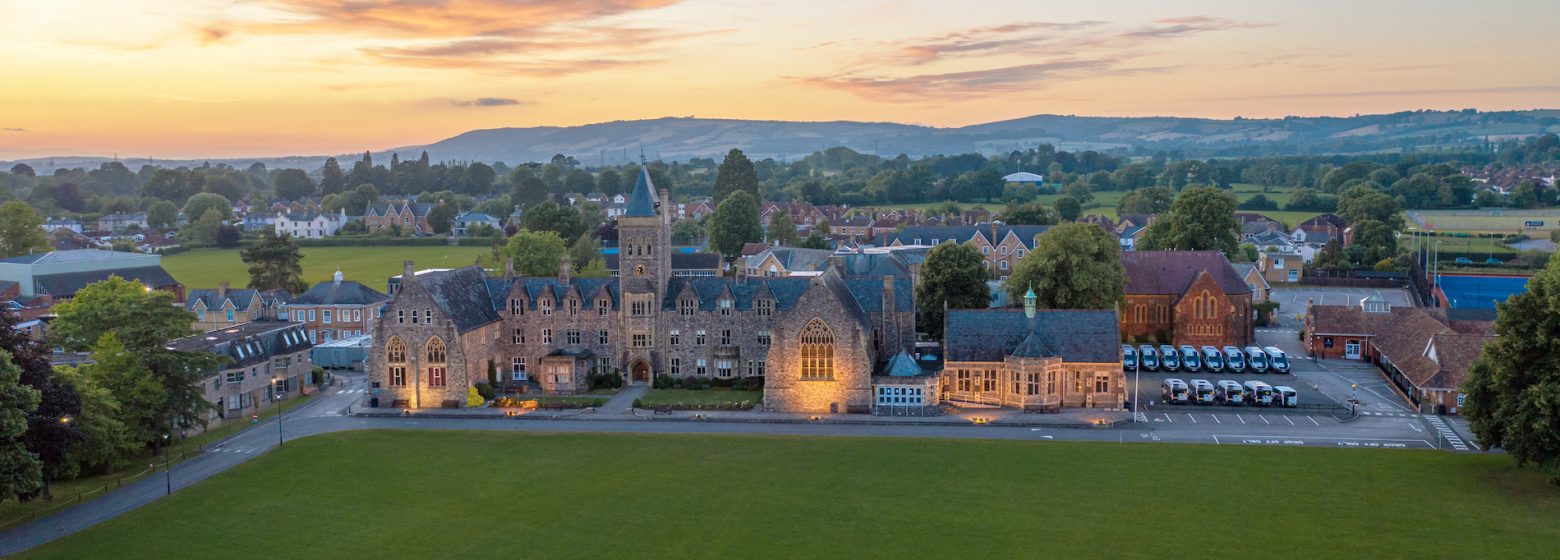Each Tuesday, the intrepid team of TPS History detectives meet to delve into the past and research famous events to coincide with the publishing date of this week’s Courier. This term, as we will shortly be remembering the 100 year anniversary of the WW1 Armistice, we have decided to focus on events which happened between the years 1914-18.
The pupils have only one hour to research, write and illustrate their articles. We hope you enjoy them and discover some fascinating bits of History.
Joanna Hall-Tomkin
Head of History and Pastoral Head Years 5 & 6
1915 Execution of Edith Cavell
Edith Cavell was born in the village of Swardeston in Norfolk, England. When she was a young girl, Edith and her sisters studied in the vicarage where they lived. At around 15 years old, she enrolled at Norwich High School for Girls, and later went to three different boarding schools. Edith studied hard, and had a particular talent for learning French — a talent that she would use later on in her working life.
In 1896, Edith spent a few months at the Fountains Fever Hospital to see whether nursing was the right profession for her. Later that year she was accepted at the Royal London Hospital to begin her professional training. It wasn’t long before Edith put her nursing skills into action. In 1897, the deadly disease of typhoid broke out in the town of Maidstone in Kent, England, and Edith — along with several other nurses — was sent to help those suffering.
She did a great job, and even received a ‘Maidstone Medal’ – an award given to those who worked hard to beat the deadly epidemic. However, in 1907, she was asked to return to Belgium to help look after a sick child, under the care of Dr. Antoine Depage.
By this point, Edith was a well-respected nurse and it wasn’t long before Dr. Depage had another job for her — an important job with lots of responsibility. He opened Belgium’s first nurse training school and put Edith Cavell in charge. She proved to be the perfect person for the job and made the school a great success. In fact, Edith did such a good job that after just one year, she was training and providing nurses to three hospitals, 24 schools and 13 nurseries. In 1914, during one of her trips back to Norfolk to visit her family, news reached Edith about the outbreak of the First World War. After hearing about all the men being sent off to fight in bloody battles, she decided she must help. And so once again, she set off back to Brussels in Belgium, where her hospital had been converted to a Red Cross hospital to care for war victims.
here, she encouraged the nurses to treat any soldiers that came through their doors, regardless of which side they were fighting on. On August 1914, German forces advanced into Belgium and took control of the country. It was at this time that Edith made a decision that would change her fate – she decided to help British, Belgian and French soldiers escape to Holland, a ‘neutral country’ where they would be safe.
Working closely with a secret network of people, she sheltered Allied soldiers in her hospital until they were well, and then smuggled them out through an underground passage. She also helped to provide them with a bit of money, fake identity cards and secret passwords for their escape. Over time, the German police became suspicious of Edith, and her colleagues urged her to flee to save herself. Edith refused, and insisted on staying and helping Allied soldiers leave Belgium.
But in August 1915, disaster struck when a Belgian spy discovered the secret tunnel beneath the hospital and reported it to the authorities. On 3rd August, Edith was arrested and kept in seclusion. When interrogated by German officials, she chose not to lie and instead confessed to everything… Word of Edith’s arrest spread far and fast, and there was an international outcry urging that she be released. Many people felt she should be treated with mercy, given that she had done so much work to help and look after both Allied and German soldiers. Sadly, their cries went unheard, and following a short trial, Edith was found guilty of treason and sentenced to death. Politicians from different countries pleaded that her death sentence be reconsidered, but the decision was final. And, tragically, on 12 October 1915 Edith Cavell was executed by a German firing squad in Brussels. A statue to her was erected and stands in St Martins Place, near Trafalgar Square, in London.
Sophia Elsmore
1917 Beginning of the First Battle of Passchendaele (3rd Battle of Ypres)
The battle was fought over control of the village of Passchendaele, near the town of Ypres in Belgium.
The British launched many massive attacks. They were helped a lot by artillery, aircraft and sometimes tanks. The British troops were unsuccessful as they were attacking uphill and faced a large and modern German defence.
Canadian troops eventually captured the village on 6th November 1917, the Allies had lost 140,000 men; a ratio of about 5cm ground taken by every dead soldier. The battle has become famous as the conditions for the men were terrible. A wet October meant that the area being fought over was literally a sea of mud and many men and horses, fell into shell holes and drowned.
Gabriel McCarthy, Charlie Webber and Aryan
Tyne Cot Cemetery Belgium
Near the town of Ypres in Belgium is Tyne Cot Cemetery, the largest Commonwealth War Graves Commission cemetery, anywhere in the world. It is now the resting place of more than 11,900 servicemen of the British Empire from the First World War. In addition, the rear of the cemetery is occupied by the curved Tyne Cot Memorial. This memorial commemorates a further 35,000 soldiers of the British and New Zealand forces who have no known grave.
Tyne Cot or Tyne Cottage was a barn named by the Northumberland Fusiliers which stood near the level crossing on the road from Passchendaele to Broodseinde. It was named this as it resembled the Tyneside cottages from the area they grew up in. Around it were a number of blockhouses or ‘pillboxes’. One of these pillboxes was unusually large and was used as an advanced dressing station after its capture. The graves of soldiers who died in the station are still present and are recognisable as they are scattered around the pillbox and do not follow the uniform design of the other graves. Sir Herbert Baker, architect of Tyne Cot cemetery, said he wished the cemetery to have ‘the appearance of a huge, well-ordered English churchyard’ . The entrance is a round-headed arch. On either side of the central arch are the dates of the First World War, 1914 on the left and 1918 on the right. In addition, beautifully sculpted angels, kneeling in mourning, adorn the stone plinths. The two surviving blockhouses are located towards the western end of the cemetery. They are made of concrete and are surrounded by four tall poplar trees.
George V visited Tyne Cot Cemetery in 1922 during his visit to the cemeteries of the First World War. At his suggestion, a Cross of Sacrifice, also called the Great Cross, was placed on the original large blockhouse. Two remaining German blockhouses can be seen today. There are now more than 11,900 Commonwealth servicemen of the First World War buried or commemorated in Tyne Cot Cemetery. More than 8,370 of the burials are unidentified but there are special memorials to more than 80 casualties known or believed to be buried among them. Other special memorials commemorate 20 casualties whose graves were destroyed by shell fire. There are also four German burials, three being unidentified. The Tyne Cot Memorial forms the north-eastern boundary of Tyne Cot Cemetery and commemorates nearly 35,000 servicemen from the United Kingdom and New Zealand who died in the Ypres Salient after 16 August 1917 and whose graves are not known. The memorial stands close to the farthest point in Belgium reached by Commonwealth forces in the First World War until the final advance to victory.
It is a hugely moving experience to visit this impeccably maintained cemetery and to witness at first hand the immense cost of war. Families were given 66 letters at the base of the headstones, in which to write a personal message; some of these are incredibly moving.
I can think of few more tranquil places to visit. Yet, it is that very tranquillity that highlights the enormity of the sacrifice which this, the largest Commonwealth War cemetery in the world in terms of burials, represents. The peaceful dignity of these ‘silent witnesses’ cannot fail to create an impact due to the sharp contrast with the reality of the bloody fighting that took place on the same ridge. On his visit to the WW1 cemeteries in 1922, George V himself said,
‘I have many times asked myself whether there can be more potent advocates of peace upon earth through the years to come than this massed multitude of silent witnesses to the desolation of war.’
Each year, Year 9 pupils and staff from TS, visit this site and others from WW1, in their own Battlefields pilgrimage.
Joanna Hall-Tomkin





